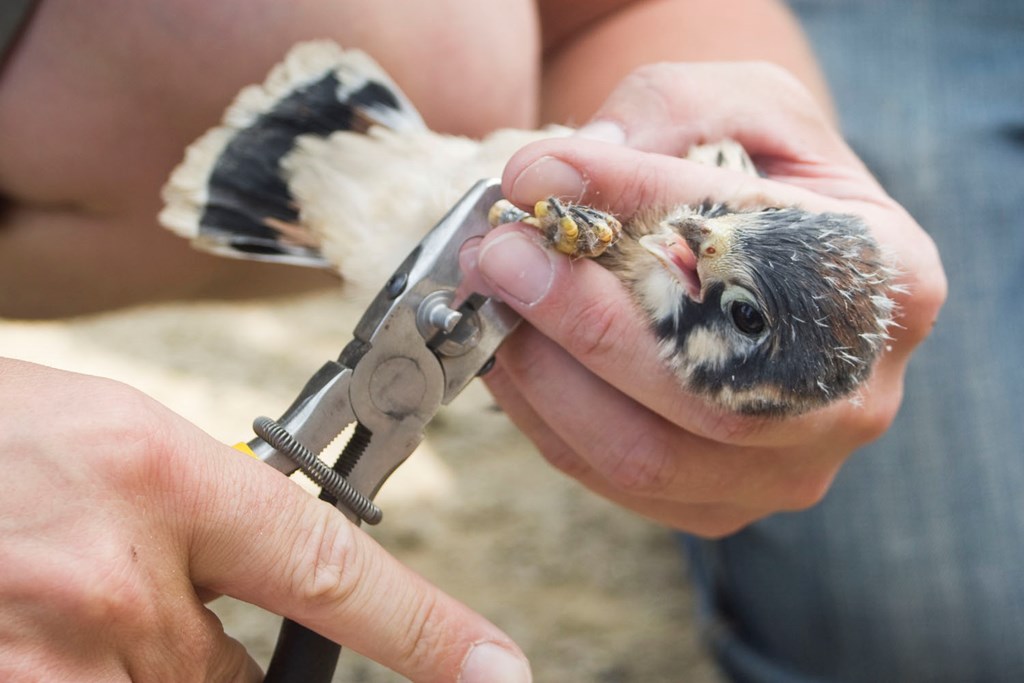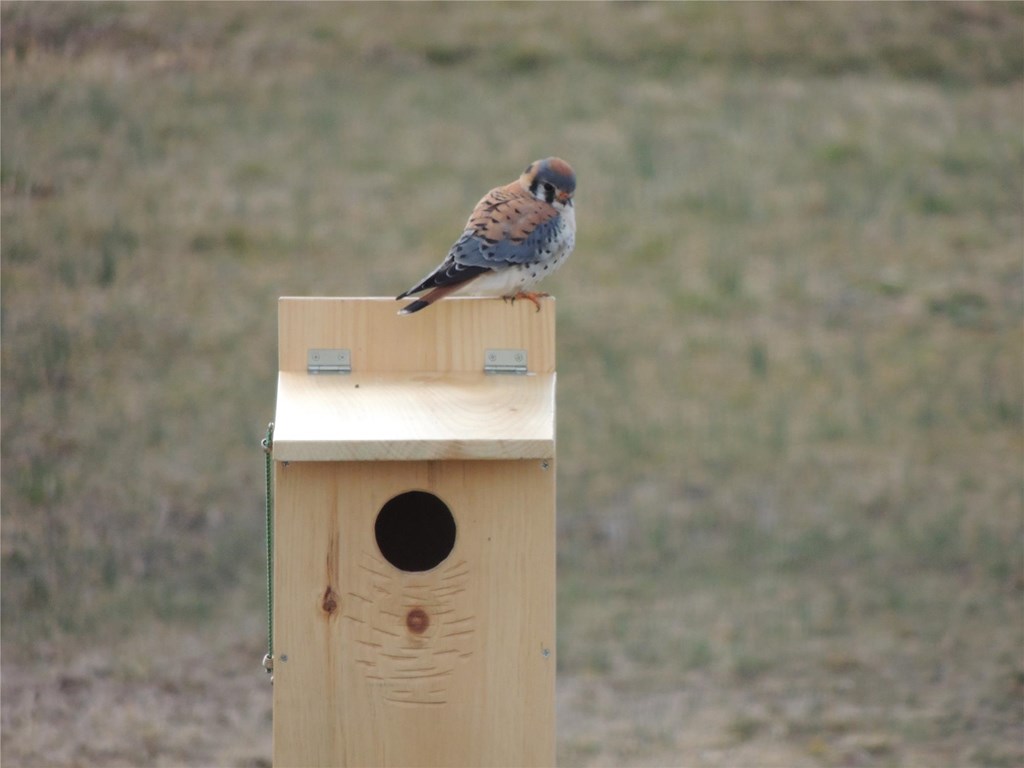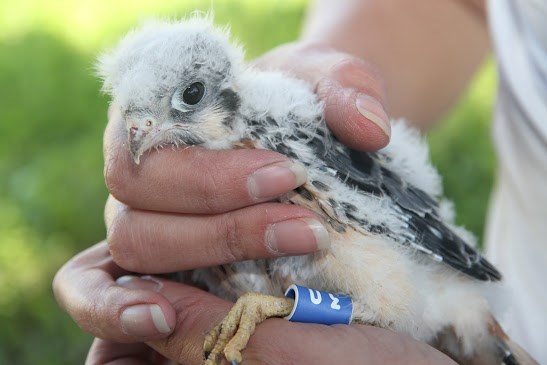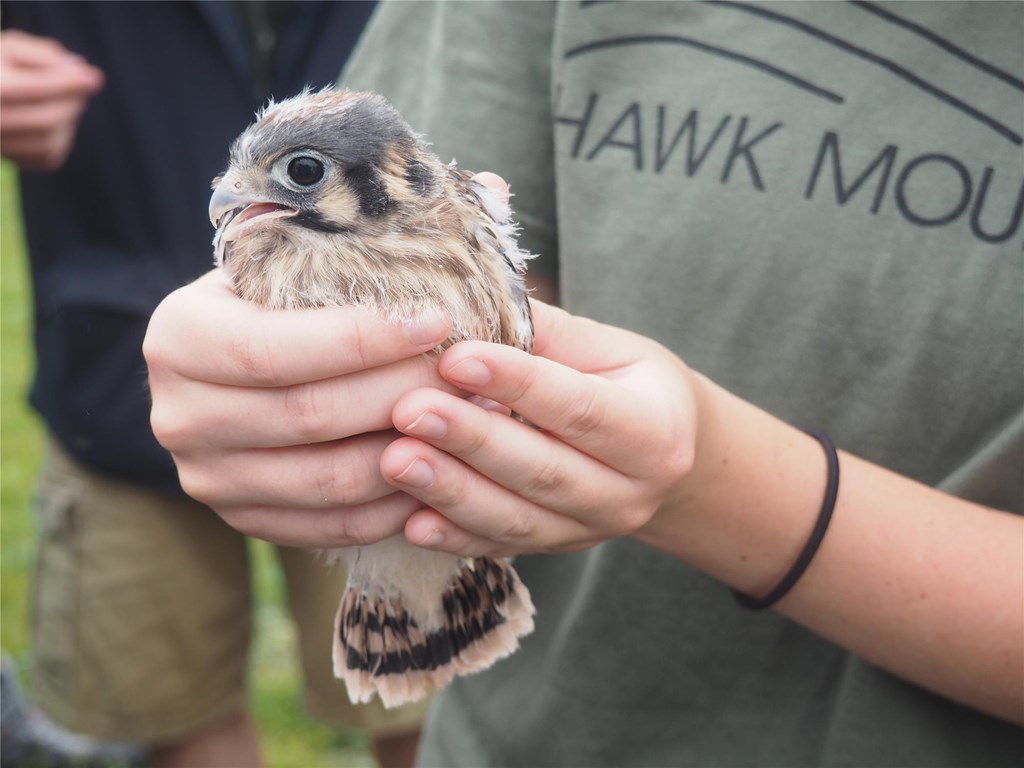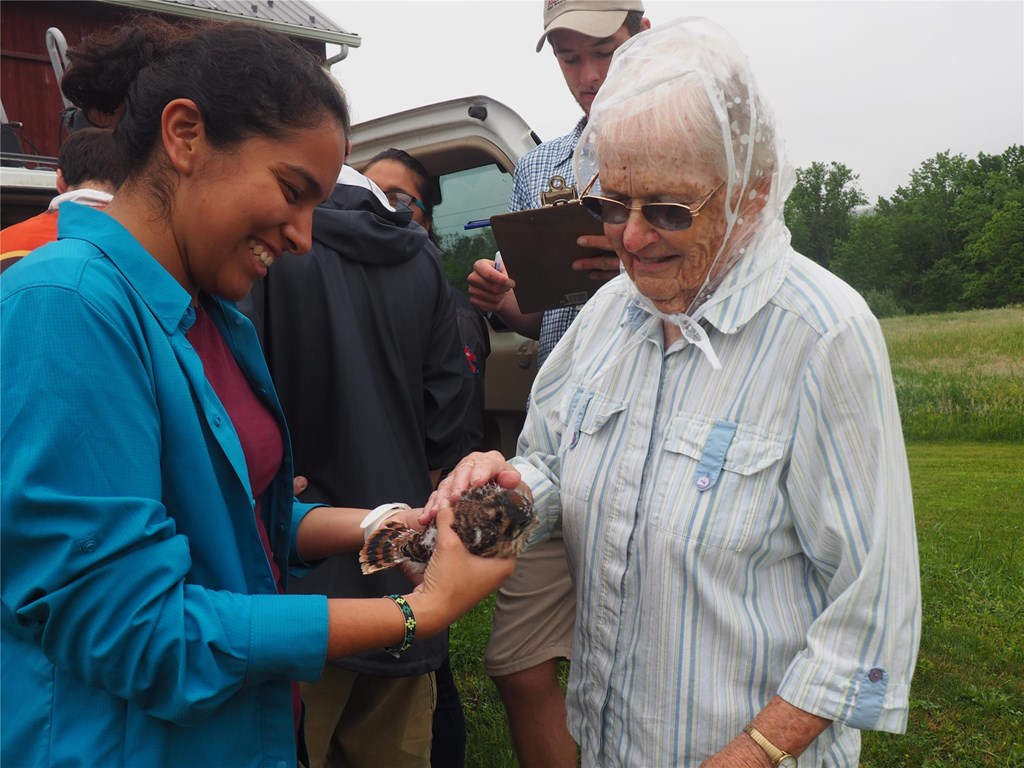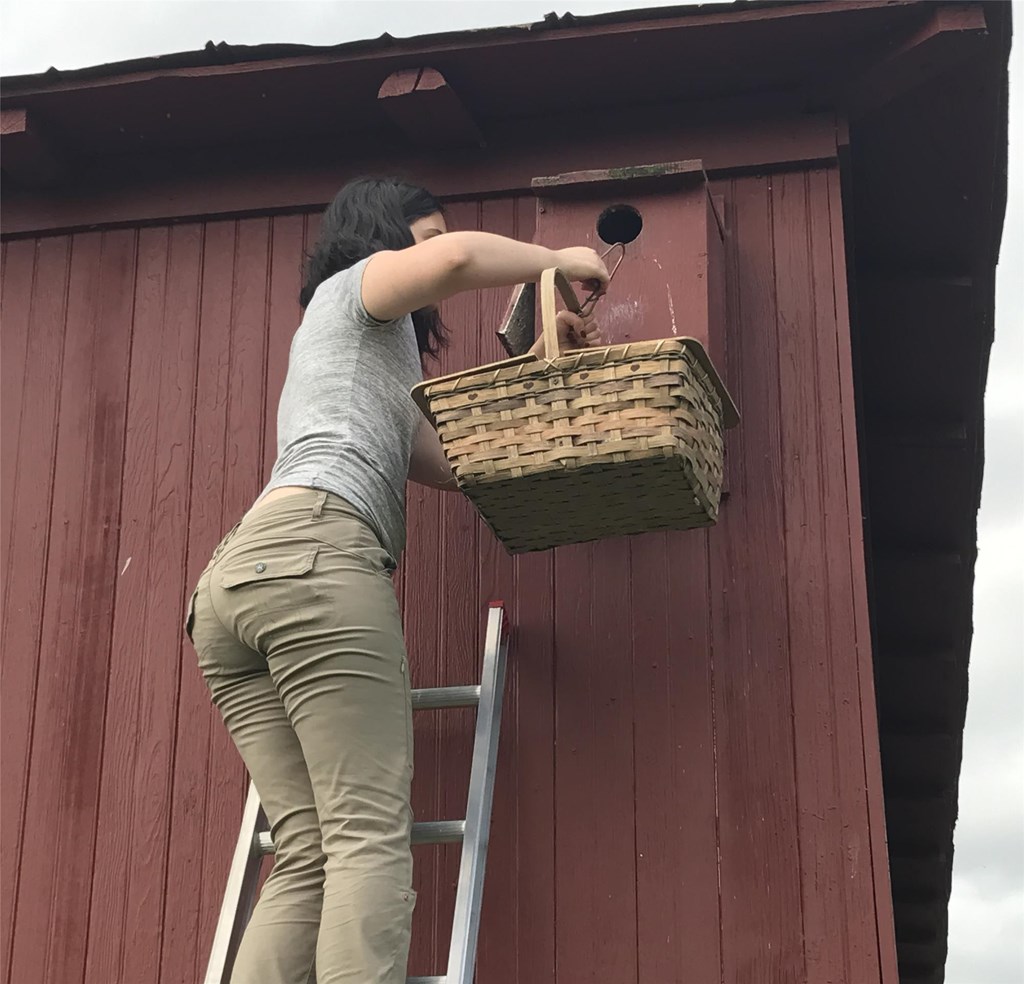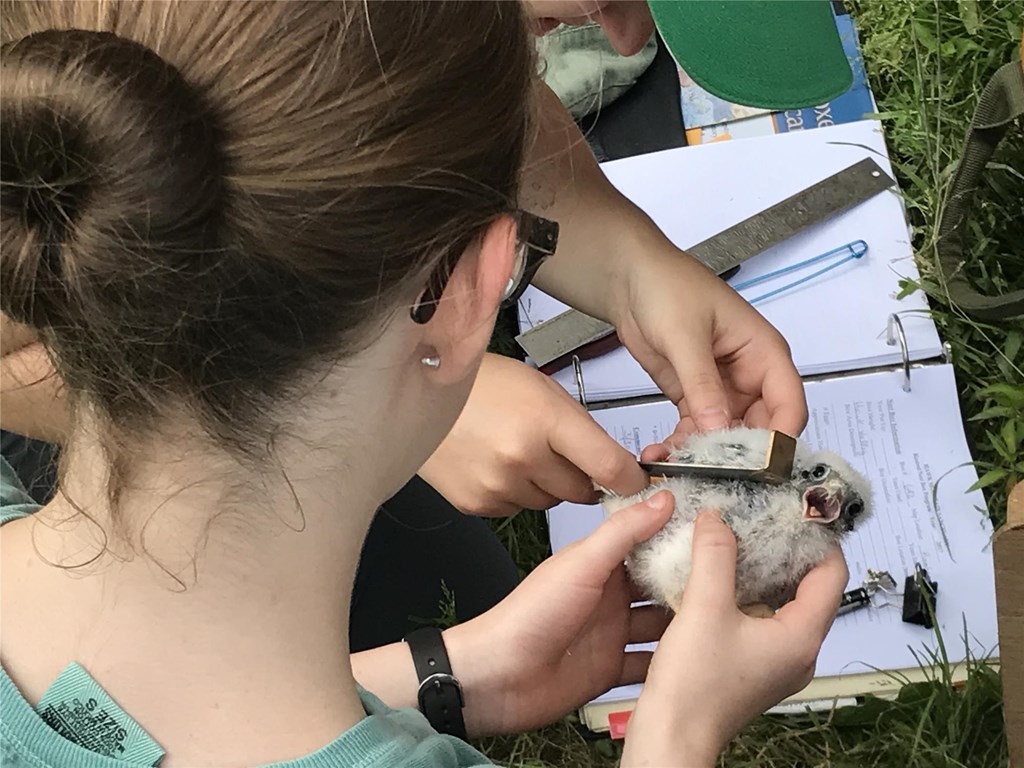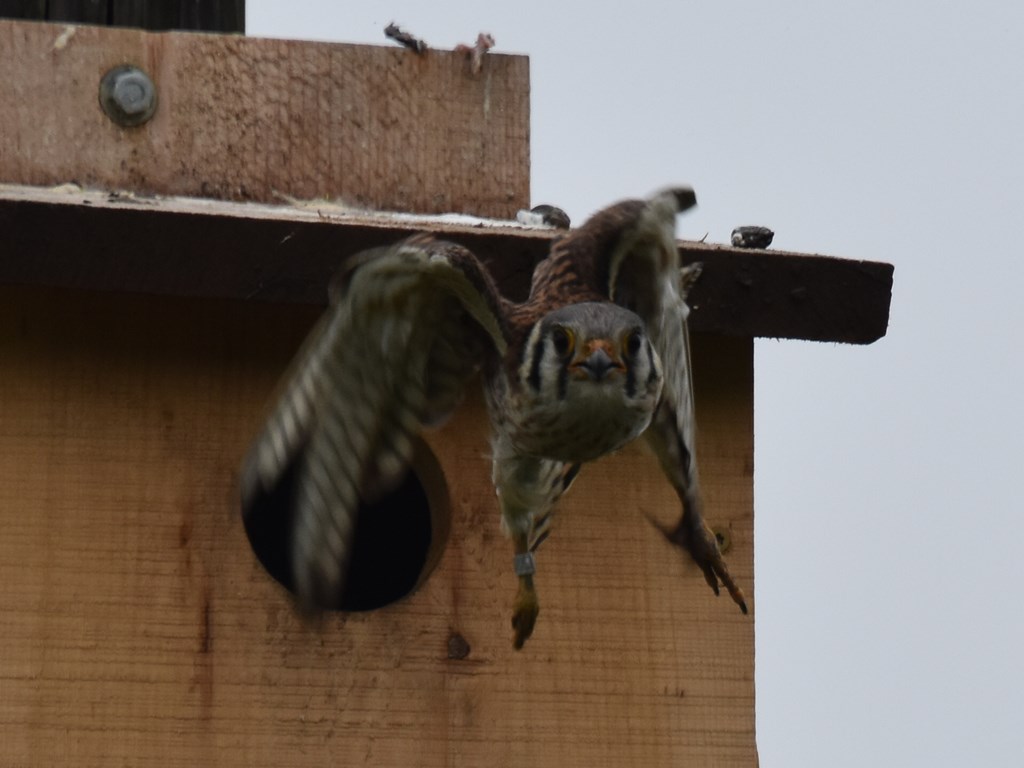American Kestrel Nest Box Program
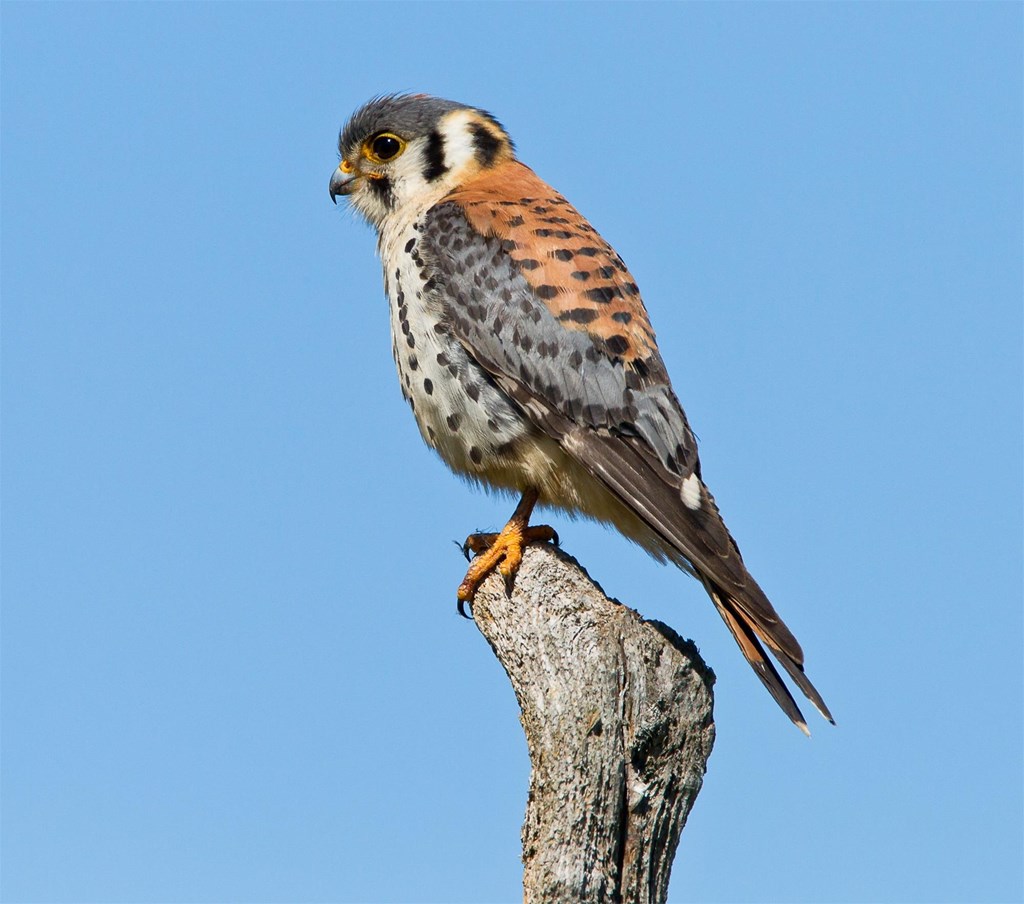
Hawk Mountain Sanctuary has been studying the breeding, wintering and migratory habits of American Kestrels for more than 50 years. Today more than 200 kestrel nest boxes have been placed within a 25-mile radius of Hawk Mountain, and each year, the boxes are cleaned and monitored for signs of activity. If successful, nestlings are banded at two weeks of age. Maintaining successful relationships with local residents, private landowners and volunteers is key to the project’s overall success.
This program provides outreach to the local community and offers hands-on training for spring conservation science trainees and spring field interns, including building experience in data collection, banding, handling live nestlings and documentation.
Project Goals:
- Long-term monitoring of American Kestrels near Hawk Mountain
- Identifying factors that contribute to species recent declines
- Work together with government officials, local residents, landowners, and local conservationists, to help to improve the conservation status of this species.
Kestrel Webcam Kestrel Webcam Curriculum Scientific Publications Farmland Raptor Project
Findings
- Productivity of American Kestrels from Hawk Mountain nestboxes has decreased during the past decade. Similar observations have been made in other areas across North America.
- Autumn migration counts of American Kestrels at Hawk Mountain and elsewhere show similar declines.
- Predation by Cooper’s Hawks in winter in eastern Pennsylvania is a leading cause of local mortality.
- 95% of American Kestrels breeding in Sanctuary nest boxes have tested positive for West Nile Virus antibodies.
The Future
The recent decline in kestrel populations makes the long-term data more important than ever. Since the Acopian Center opened in 2002, the Sanctuary has taken action and launched a public service campaign to increase awareness about kestrels and to encourage rural landowners to build and erect a kestrel nest box to help boost populations. It also published a children’s storybook, The Return of Magic, and conservation science trainees designed a children’s coloring book, Kestrels of the World. This type of grassroots outreach continues as does the long-term monitoring of nest box breeding success
Today we also are expanding this work to include a scientific study of kestrel behavior, a project ideal for college undergraduates involved as a summer field experience intern. These North American undergraduates make daily observations, monitor the daily movements of kestrels at a designated box, record voice audio that describes the movement, and then transcribe the information until the nestlings have dispersed.
This work will allow Hawk Mountain to better assess the environmental factors that affect this ecological sentinel of the farmlands that surround the Sanctuary, and also will help prepare up and coming conservationists gain hands-on experience in raptor research.
How can you help?
We always appreciate donations to help our efforts. Financial support helps to cover staff time and the price of tracking and analysis equipment. Click the button below, and include in the comments of the form that the online gift is for American kestrel research.
You can also help to support this important monitoring project through a nest box adoption. For your $100 adoption you'll receive:
- Official Adoption Certificate
- Report of nesting activity
- Update on the Nestbox Program
- Free kestrel gift for each box adopted
If you own property that is grassland or open farmland, you can build and erect a nest box easily by downloading and following the Nest Box Instruction Manual.
